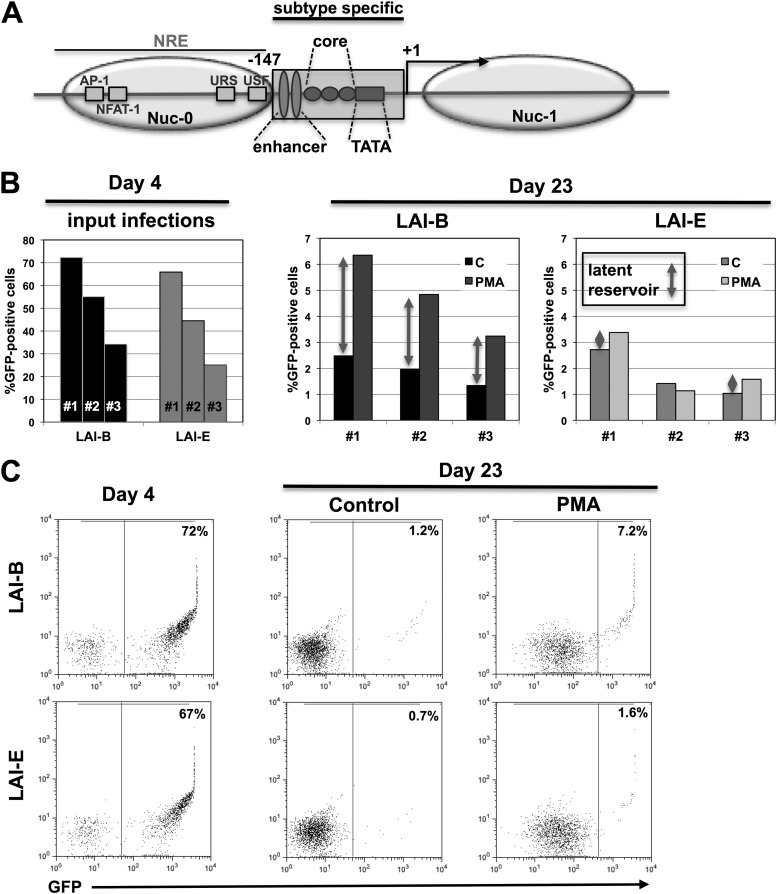Fig 2.
The enhancer/core promoter element of the LTR controls HIV-1 latency establishment. (A) Schematic overview of the HIV-1 LTR showing some of the key elements and transcription factor binding sites, including the positions of the nucleosomes. The 147-nt enhancer/core promoter region that is exchanged in the different viral constructs is indicated by a box (subtype specific). (B) Input infection for three independent infection experiments using LAI-B and LAI-E were measured as the level of GFP-positive cells on day 3 postinfection. The size of the latent infection reservoir was then determined on day 23 postinfection by comparing the percentages of GFP-positive cells under baseline conditions (black columns) and 24 h following PMA stimulation (gray columns). For each infection experiment, the size of the latent reservoir is indicated by gray arrows. C, control. (C) Flow cytometric data for one representative latency establishment experiment. Initial active infection levels of J2574 reporter T cells with either LAI-B or LAI-E were determined by flow cytometric analysis for GFP expression on day 4 postinfection. On day 23, when stable latent infection was established, samples of the respective cell populations were stimulated for 24 h with PMA (10 ng/ml) and active infection levels in control and PMA treated cell cultures were determined by flow cytometric analysis. The difference between the percentages of GFP-positive cells in the PMA-treated cell population and the control cell cultures represents the latent infection reservoir.

